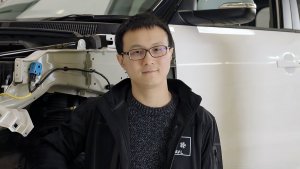This blog was written by Huaji Wang, an ADAS/AD Senior Engineer at AVL. Wang is currently leading a project for developing an open architecture platform for testing connected and automated mobility (CAM) technologies. AVL specialises in providing customised systems engineering solutions for the design, development, and verification and validation (V&V) of CAM technologies. They are a CAM Creator in the UK Connected and Automated Mobility Roadmap to 2030.

The road to connected and automated mobility
CAM technologies have the potential to significantly reduce the number of road accidents, mitigate air pollution, and improve traffic efficiency by eliminating many of the mistakes that human drivers routinely make. However, one of the most challenging problems CAM technologies need to solve before they can be widely deployed in the real world is how to verify and validate the effectiveness, robustness, and safety of systems within these technologies. This is a non-trivial problem as it will lead to the acceptance of automated systems to the wider public. A question often asked in the CAM world is, “how many miles of driving would it take to demonstrate autonomous vehicles’ reliability?” Hundreds of millions of miles is one predicted answer. This prediction indicates that it is an extremely difficult target for one single company to achieve. Therefore, the deployment of CAM requires a collaborative effort of industry working together with policy-makers and academic institutes to bring down testing costs and facilitate the safe deployment of CAM technologies.
Accelerating a safe autonomous future
One of the solutions AVL is working on is to combine various testing techniques and implement them automatically in different environments. These techniques include high-fidelity simulation testing, rig testing such as software-in-the-loop, hardware-in-the-loop, and vehicle-in-the-loop testing, proving ground testing, and public road testing. These techniques come with their advantages and drawbacks. It is key to apply them appropriately at different stages of the CAM development process. Equally as important, is to know what tests need to be performed to obtain the most out of the usually limited resources for testing activities. This requires a systematic and methodical approach for designing a CAM system. Requirements engineering and test case definition are at the core of such engineering activities.
Connectivity is key
A world with CAM technologies will not be achieved simply by the development of the standalone autonomous driving car. An important factor to ensure is the smooth and safe interactions between autonomous vehicles and other road users with or without automation. The supporting technology for this is connectivity. Vehicle-to-Vehicle, Vehicle-to-Infrastructure, and Vehicle-to-Everything communications increase the design freedom and the possibility of achieving a CAM world, whilst on the other hand, the extra freedom has exponentially grown the testing for these technologies to an unprecedented level. A well-instrumented and safe real-world environment is essential for transporting such technologies from a concept to reality. The Midlands Future Mobility project within CAM Testbed UK is achieving this goal. From instrumentation to real-world testing and post analysis, the testbed ecosystem is a great environment that can further advance CAM technologies into reality.
To view AVL’s contribution to the Roadmap, view the interactive tool. To find out more about AVL, visit their website or get in touch with Huaji Wang – huaji.wang@avl.com.


